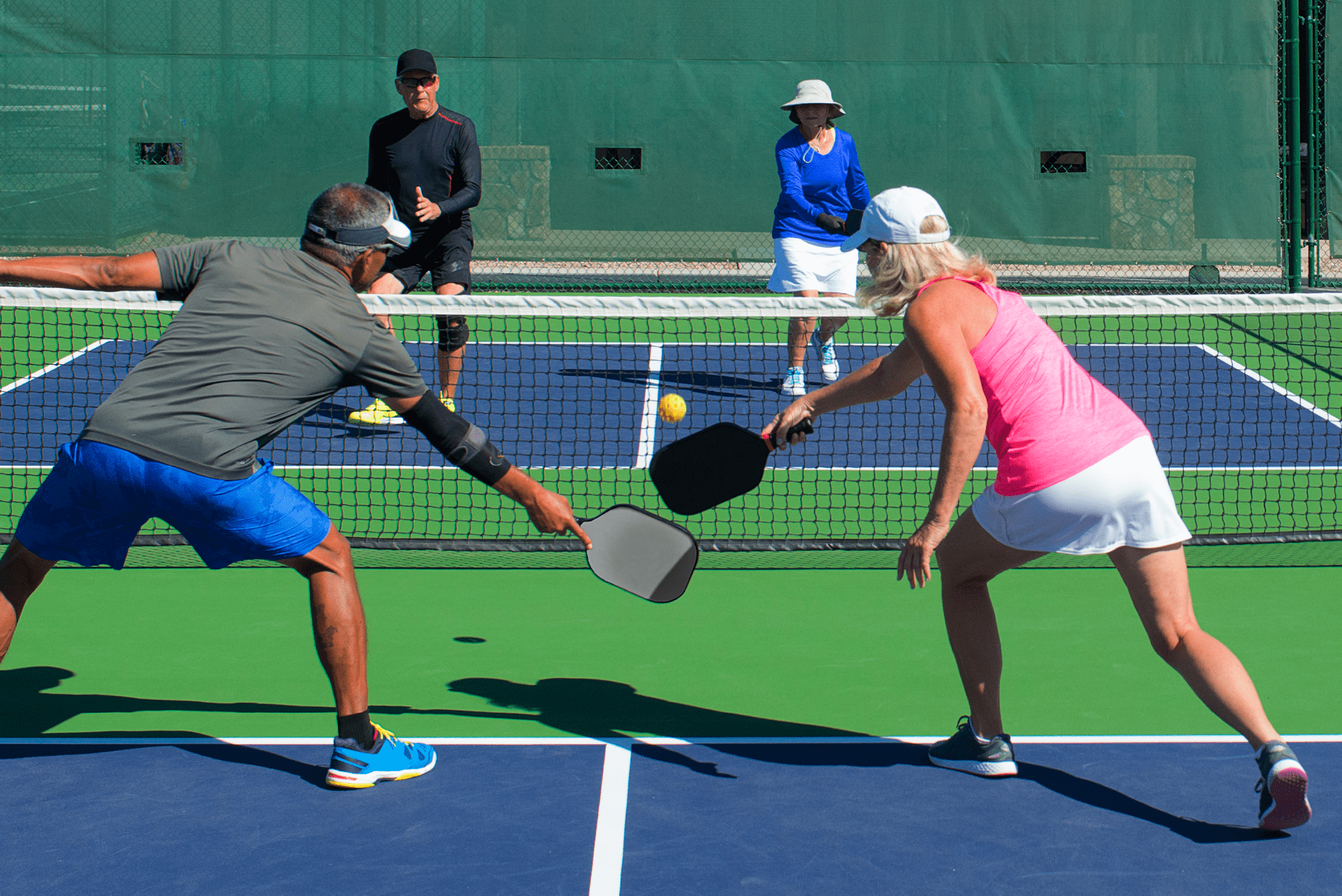Detailed Directions for Mounting a Backyard Pickleball Court in Any Size Space
Detailed Directions for Mounting a Backyard Pickleball Court in Any Size Space
Blog Article
Checking Out the Different Choices for Yard Pickleball Judiciaries: A Home owner's Guide to Installation and Upkeep
As the appeal of pickleball continues to climb, many home owners are thinking about the setup of a dedicated court in their backyards. This task calls for cautious assessment of various factors, such as the available room, suitable surface products, and recurring maintenance requirements. Recognizing these aspects is important for developing a pleasurable and functional having fun setting. However, the journey from conception to execution can be complicated, triggering the demand for a thorough overview that attends to both installation and maintenance techniques. What are the ideal practices to ensure your court stays practical and pristine over time?
Assessing Your Area
When taking into consideration the addition of a pickleball court to your yard, how can you effectively analyze the available area? The very first action is to determine the dimensions of your backyard, making certain that you have sufficient area for a regulation-sized court, which measures 20 feet by 44 feet for increases play (backyard pickleball court). It's important to make up extra area surrounding the court to assist in motion and enhance gameplay, commonly advising an added 10 feet on each side
Next, examine the surface of your yard. A degree surface area is excellent for a pickleball court, as irregular ground can cause security dangers and impact gameplay. If your lawn inclines or has obstructions such as trees or landscape design features, take into consideration how these components will impact your court's place and use.
Picking Court Surfaces
Selecting the best surface area for your yard pickleball court is vital for optimizing efficiency and player security. The selection of court surface area not only affects gameplay however also affects the durability and upkeep of the court.
Asphalt and concrete provide a hard, long lasting surface area that can hold up against the wear and tear of normal play. To reduce this, many homeowners choose for cushioned surfaces or specialized layers that offer some degree of shock absorption.
Conversely, modular sports tiles are a significantly prominent selection. These floor tiles are created specifically for pickleball and offer exceptional traction, water drainage, and shock absorption. They can also be set up over existing surfaces, making them a versatile option for numerous backyards.
When choosing a surface area, think about variables such as environment, budget plan, and desired level of play. A well-chosen court surface area will improve your having fun experience while making certain safety and security and longevity for your backyard pickleball court. Making an educated choice is important for optimizing satisfaction and efficiency.
Setup Process Overview
Installing a backyard pickleball court commonly entails numerous crucial steps that guarantee both capability and resilience. The very first step is to choose a proper place in your lawn, taking into consideration factors such as water drainage, proximity, and sunlight to your home. When the site is picked, clear the area of any type of plants, rocks, or debris to develop a level foundation.
Next, detail the dimensions of the court, which need to be 20 feet wide by 44 feet long for a common pickleball court (backyard pickleball court). After marking the boundaries, excavate the area why not try these out to a depth of about 4 to 6 inches, guaranteeing correct water drainage. This excavation will certainly enable a stable sub-base
Following this, install a base layer of gravel or smashed rock to advertise drain and stability. Small this layer thoroughly prior to proceeding. After the base is established, you can pour a concrete piece or install your chosen court surface area products, ensuring they stick to the dimensions.
Upkeep Tips and Strategies
To make certain the durability and performance of your backyard pickleball court, routine maintenance is essential. Beginning by regularly checking the surface area for fractures, particles, and any type of indicators of wear. Promptly address any type of problems to stop additional degeneration. Make use of a broom or leaf blower to maintain the court clean, removing fallen leaves, dust, and other debris that can influence gameplay.

Additionally, check your court's water drainage to avoid water pooling, which can cause surface area damages gradually. Ensure that the bordering landscape guides water far from the court. Think about sealing the surface area every couple of years to improve toughness. if your court is made of asphalt or concrete.
Finally, establish a regular schedule for upkeep tasks, consisting of seasonal click here for more info checks and fixings, to maintain your court in optimal problem and ready for play. Regular upkeep not only improves performance however additionally prolongs the life of your yard pickleball court.
Cost Factors To Consider and Budgeting
When preparing for a yard pickleball court, understanding the different cost factors to consider is essential for effective budgeting. The complete expense can vary substantially based on aspects such as court dimension, surface material, and installation intricacy.
Initial costs normally include site preparation, which may involve grading and leveling the land, adhered to by the choice of surface area-- choices variety from asphalt to concrete, with each product impacting both lasting and ahead of time prices. As an example, concrete offers toughness however features a higher price tag, while asphalt may offer a much more affordable alternative.
In addition, think about the prices related i thought about this to fencing, lighting, and accessories such as webs and paddles - backyard pickleball court. Fence is essential for maintaining rounds included, and lights can expand playtime right into the night hours

Conclusion
Finally, the installation of a yard pickleball court includes mindful consideration of space, surface materials, and upkeep needs. Selecting ideal measurements, such as the recommended 20' x 44', together with resilient surface area options like asphalt, concrete, or modular sporting activities tiles, contributes to a functional playing field. Normal maintenance and tracking for wear are crucial to ensure the court's longevity and optimum performance, inevitably boosting the recreational experience for all individuals.
A degree surface is optimal for a pickleball court, as uneven ground can lead to safety hazards and affect gameplay. An appropriate court surface will enhance your having fun experience while making certain safety and security and durability for your yard pickleball court.Following, lay out the measurements of the court, which should be 20 feet wide by 44 feet long for a typical pickleball court. After the base is set, you can put a concrete piece or mount your chosen court surface products, guaranteeing they adhere to the measurements.
In conclusion, the installment of a backyard pickleball court involves mindful consideration of space, surface area materials, and upkeep needs.
Report this page